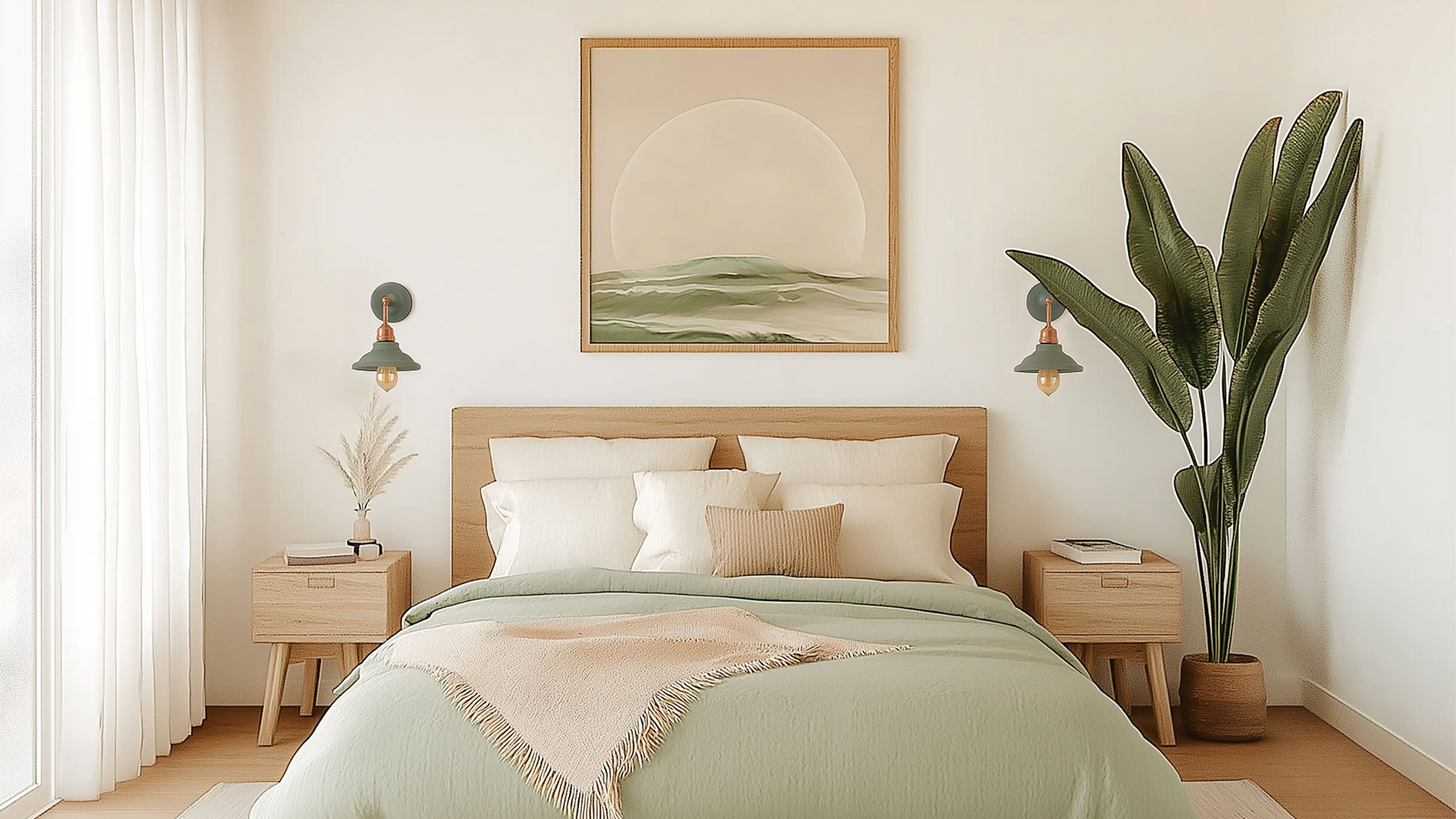Choosing the right lighting for each room isn’t just about style — it’s about function, mood, and everyday comfort. The way you light a space can make it feel cozy, energizing, productive, or relaxing. In this practical guide, we’ll walk you through the ideal lighting setup for every area of your home.
Each room in your home serves a different purpose, and lighting should support that purpose. For example, the soft, ambient lighting that helps you wind down in the bedroom won’t serve you well in a kitchen where you chop vegetables. Tailoring your lighting setup to the function of the space makes daily life easier and more pleasant.

Your bedroom is your retreat — a place to rest and recharge. Lighting here should be soft and relaxing.
Tips:
Use warm white bulbs (2700K–3000K) to create a cozy atmosphere.
Combine overhead lighting with bedside lamps for flexibility.
Consider dimmable options to adjust brightness at night.
Avoid harsh, direct light sources above the bed.
Bonus: Smart bulbs or warm LED strips behind the headboard add ambiance without glare.
The living room often serves many purposes — from watching movies to entertaining guests or reading.
Tips:
Use a combination of ceiling lights, floor lamps, and table lamps.
Add accent lighting (e.g., around artwork, shelves, or plants) to create depth.
Choose dimmable or smart lighting to easily change the mood from day to night.
If the room has a TV, consider soft backlighting to reduce eye strain in the dark.
In the kitchen, lighting needs to be clear and practical for cooking, cleaning, and prep work.
Tips:
Use neutral to cool white light (3500K–5000K) for visibility and cleanliness.
Install task lighting under cabinets to illuminate counters and work areas.
Make sure the ceiling light is powerful enough to reach every corner.
Pendant lights above an island or bar add both function and style.
Bathrooms require bright, even lighting, especially around mirrors for tasks like shaving or applying makeup.
Tips:
Use bright, cool white lights (4000K–5000K) for clarity.
Place sconces or vertical lights on both sides of the mirror to avoid shadows on the face.
Overhead lighting should be diffused to prevent harsh glare.
Consider moisture-resistant LED fixtures for safety and durability.
In a workspace, the goal is to stay alert and productive, so bright, cool lighting works best.
Tips:
Choose daylight or cool white bulbs (5000K–6500K) to mimic natural light and increase focus.
Use a good desk lamp with adjustable brightness and direction.
Avoid placing screens directly in front of windows or strong light sources to reduce glare.
Add soft ambient light to reduce contrast and prevent eye fatigue.
These transition areas often get overlooked, but good lighting here improves safety and sets the tone for your home.
Tips:
Use ceiling or wall-mounted fixtures with neutral white light (3000K–4000K).
Add motion sensors for automatic lighting during the night.
Consider soft uplighting or small LED strips for visual interest.
Layer your lighting: Combine ambient (general), task, and accent lights.
Use dimmers whenever possible to adapt the light to the time of day or activity.
Match color temperature to the room's mood: Warm for rest, cool for focus.
Don’t forget aesthetics: The fixture style matters as much as the bulb type.
The right lighting brings out the best in your home — not just visually, but emotionally and practically. By thinking about how each room is used, and adjusting the lighting accordingly, you’ll create spaces that feel both beautiful and functional.
Whether you're redesigning a single room or your whole home, let lighting lead the way.









